Customizing the font and color in Visual Studio is not just about flexibility. Due to monitor resolutions being too high or low, it may become a necessity!
Changing the code font and color in Visual Studio
Getting ready
Visual Studio is a highly customizable code editing tool. You might find the default fonts too small for your screen. This is easily adjustable by holding down the Ctrl key and using the mouse wheel to increase or decrease the size, but you may want to change the default value. Or, perhaps you may want to have more control, as you may want to change your code's font size and color. You may also want to completely customize the coloration of keywords and the text background colors. The Fonts and Colors dialog box, which we'll show you how to use in this section, allows you to completely customize every aspect of the code editor's font and color:
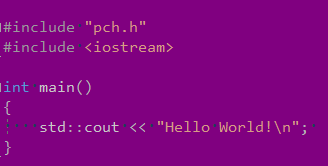
How to do it...
- From within Visual Studio, go to Tools | Options...:
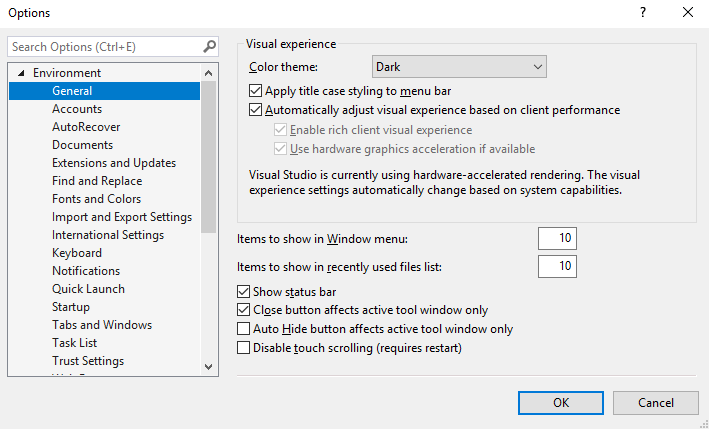
- Select Environment | Fonts and Colors from the dialog that appears. It will look like what's shown in the following screenshot:
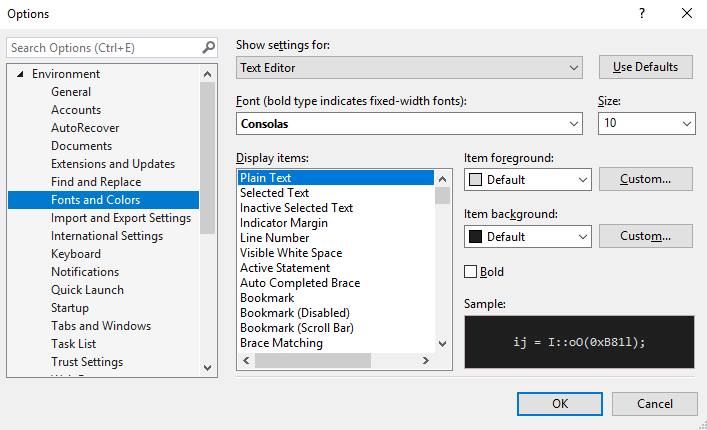
- Play around with the font and font size of Text Editor/Plain Text. Click OK on the dialog, and see the results in the code-text editor:
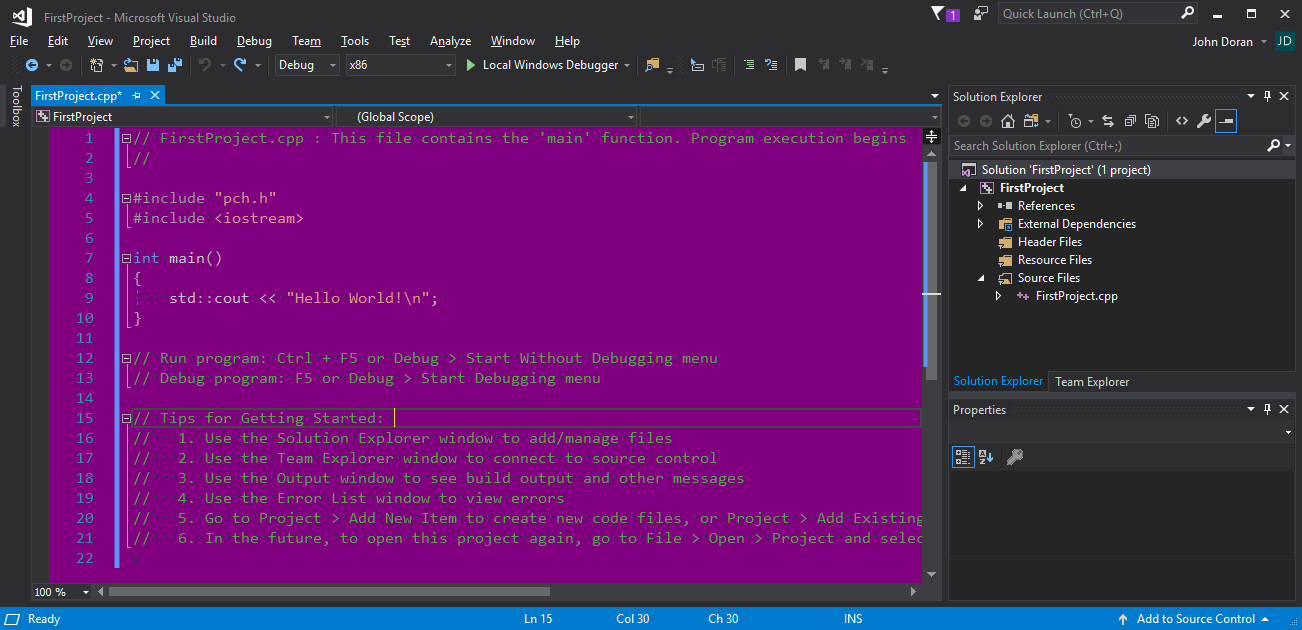
Text Editor/Plain Text describes the font and size that's used for all code text within the regular code editor. If you change the size of the font, the size changes for any text that's entered into the coding window (for all languages, including C, C++, C#, and others).
The color (foreground and background) is completely customizable for each item. Try this for the Text Editor/Keyword setting (affects all languages), or for items specific to C++, such as Text Editor/C++ Functions. Click OK, and you will see the changed color of the item reflected in the code editor.
You may also want to configure the font size of the Output Window, under the Show settings for: option, so click on the drop-down and select Output Window, as shown in the following screenshot:
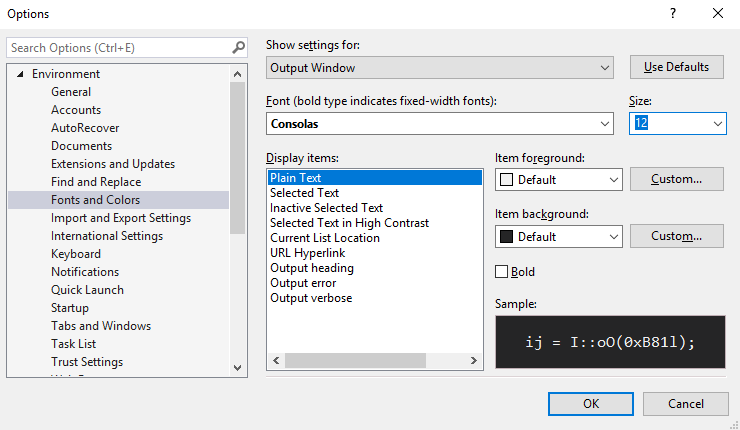
The Output Window is the little window at the bottom of the editor that displays build results and compiler errors.
For this reason, you may want to avoid changing font colors from this dialog. You must use this dialog to change the font and font size, however, for any setting (at the time of writing).
How it works...
The Fonts and Colors dialog simply changes the appearance of code in the text editor as well as for other windows, such as the output window. It is very useful for making your coding environment more comfortable.
There's more...
Once you have customized your settings, you'll find that you may want to save your customized Fonts and Colors settings for others to use, or to put into another installation of Visual Studio, which you have on another machine. Unfortunately, by default, you won't be able to save-out your customized Fonts and Colors settings. You will need something called the Visual Studio Theme Editor extension to do so. We will explore this in the next recipe.
See also
- The Extension – changing the color theme in Visual Studio recipe describes how to import and export color themes




































































